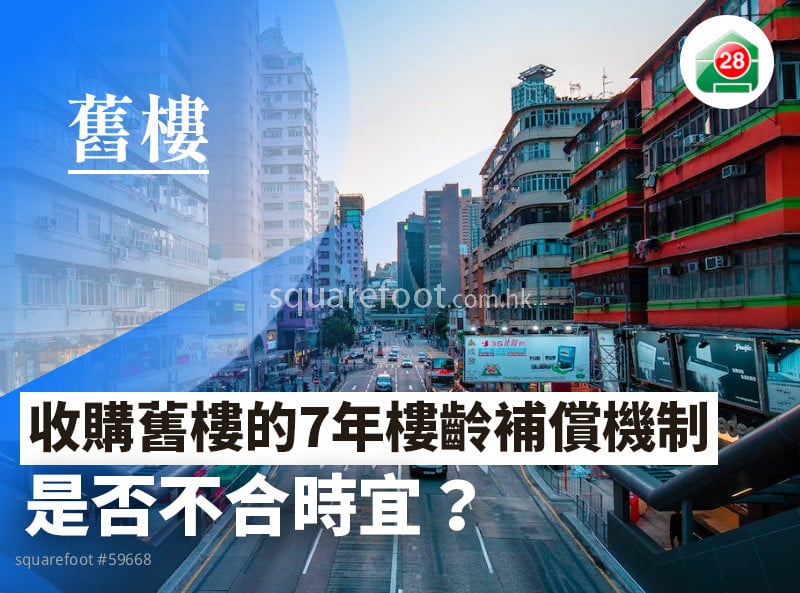- Home
- News
- Expert Blog
- Wed Property Focus
- Is The 7-year Old Building Age Compensation Mechanism For The Acquisition Of Old Buildings Outdated?
To increase housing supply, the government will use different methods, such as reclamation and change of land use. In one method, the Urban Renewal Authority (URA) acquires land, demolishes underused and dilapidated buildings in old districts, and redevelops them into high-rise buildings.
We often hear of people buying old buildings for rental purposes and also for acquisition. Which old buildings have the most potential for acquisition? What is the URA’s acquisition procedure for old buildings? How are acquisition costs and compensation determined?
The URA may launch urban renewal projects from time to time, and the whole project will be implemented in the form of a development plan. First, the URA submits a draft development plan to the Town Planning Board. Next, the Board makes the relevant drafts available for public inspection and consultation.
Do owners have to accept the acquisition? Affected property owners have two months from the development’s gazettal date to raise objections, after which the URA will submit the project, together with comments on any objections, to the Secretary for Development for consideration. If there are no withdrawn objections, the Secretary may decide to authorise the development to proceed.
When implementing a redevelopment project, the URA will issue letters to owners to enquire whether their properties are vacant, self-occupied or rented out, and conduct site surveys. Depending on the current occupancy status of the property, the URA will formally issue a purchase offer to the owner for consideration and negotiate accordingly.
Under the current rules, when the URA acquires an owner-occupied residential property, it will offer the owner the market value of the property, in addition to a Home Purchase Allowance (HPA) to assist him/her in repurchasing the property. The HPA is calculated on based on the price of seven-year-old buildings in the same district.
If the owner no longer the flat, the URA will pay the owner the market value of the property, and Subsidy Allowance (SA. The SA is generally 25 to 75 per cent of the HPA, depending on the number of properties owned by the owner and their occupancy status.
As such, the URA's purchase prices for old buildings are considerably attractive. Some may say that the purchase price of old buildings is too high. Wai Chi-sing, URA managing director, recently said that it may be time to review whether it is worthwhile to spend huge social resources to acquire decades-old flats in URA projects.
In fact, as property prices in Hong Kong rise higher, the amount of compensation becomes higher and higher, resulting in higher redevelopment costs, which can be offset by huge acquisition costs. It’s a vicious circle – when the amount of compensation increases, the price of new flats in the redevelopment area rises, which then pushes up the amount of redevelopment compensation.
The establishment of the compensation mechanism for seven-year-old buildings is undeniably outdated. Therefore, when the URA considers reducing costs, the most direct way is to modify the compensation system, but public consultation is required. Complete change will take time; fortunately, the acquisition of old developments is still a profitable endeavour.
Like 32
| Property Type | Price | Ads Period |
|---|---|---|
| For Sale Property | ||
Normal Listing Typical One | HKD:1000 (or Hsemoney:1000) | Valid:90 days |
Golden Top Listing Higher position than Top listing 2-3times better performance | HKD:3000 (or Hsemoney:3000) | Valid:60 days |
| Rental Property | ||
Normal Listing Typical One | HKD:1000 (or Hsemoney:1000) | Valid:80 days |
Golden Top Listing Higher position than Top listing 2-3times better performance | HKD:3000 (or Hsemoney:3000) | Valid:60 days |
